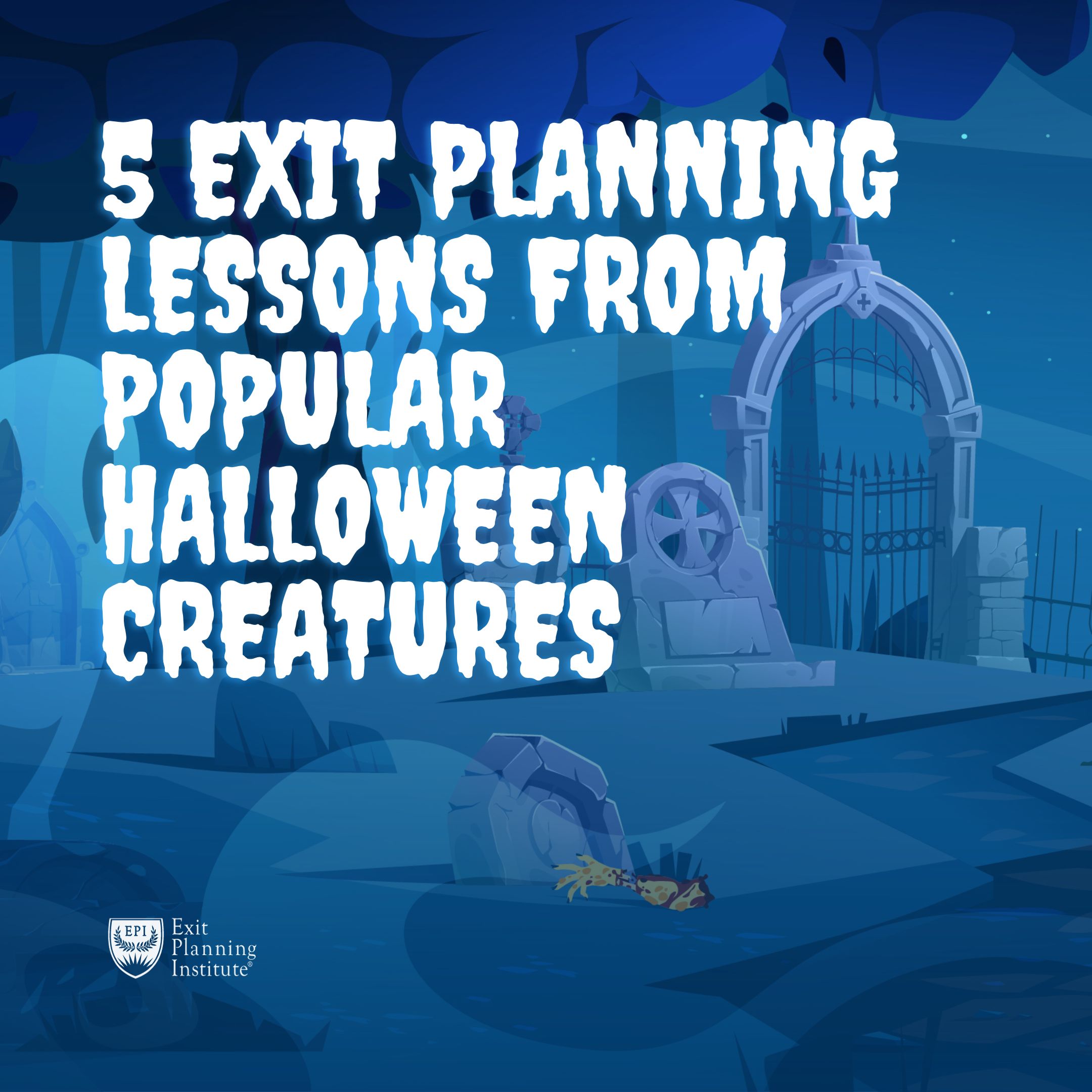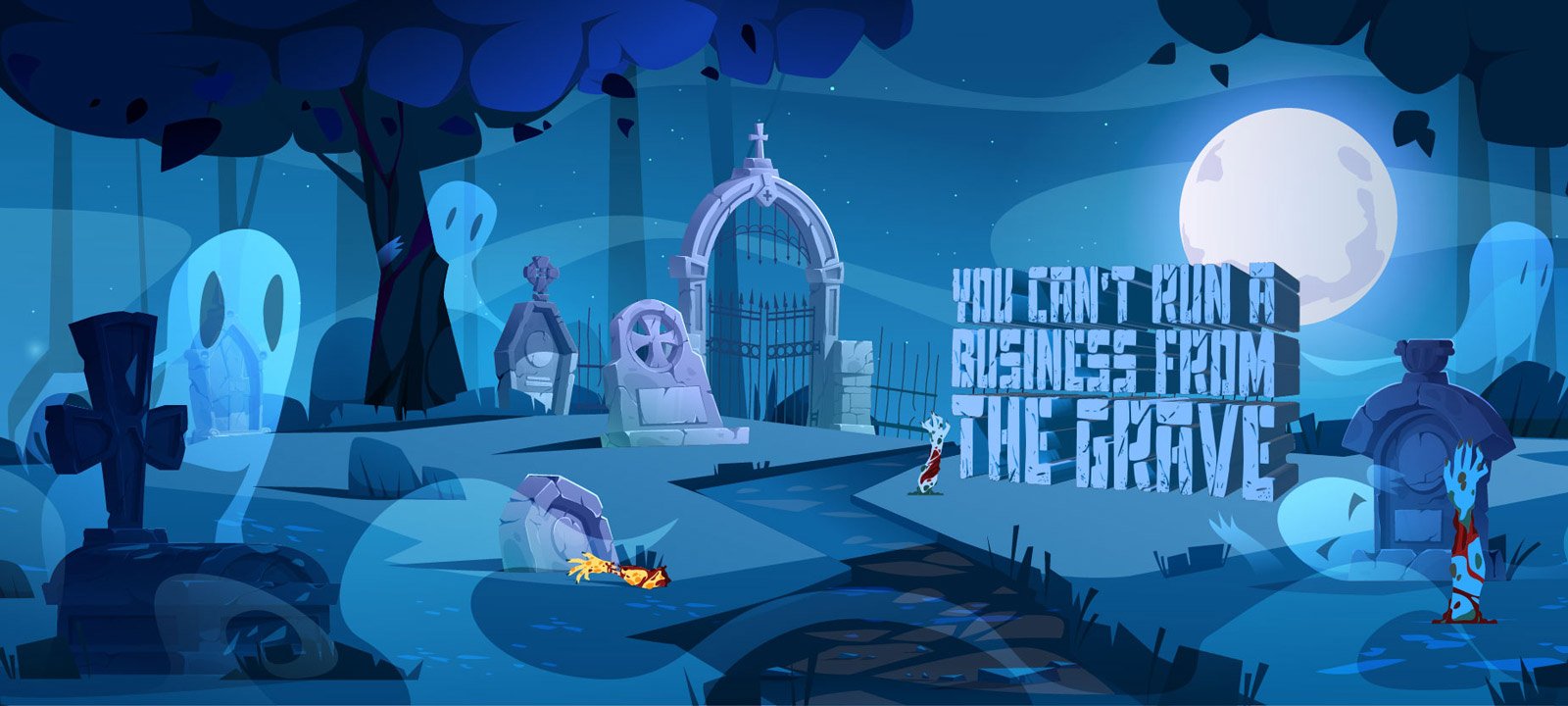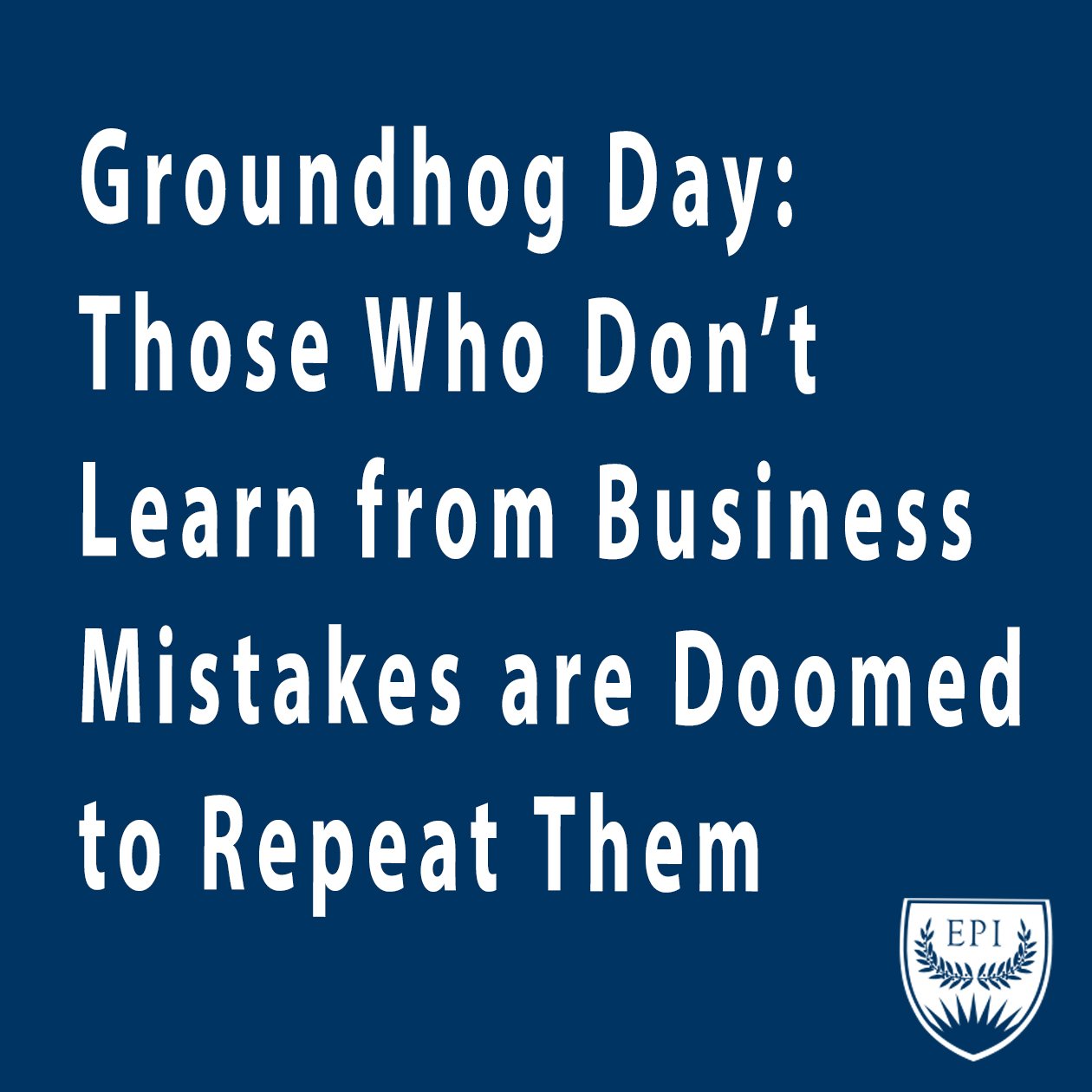
THE EXIT PLANNING BLOG
Keep up-to-date with exit planning, succession planning, industry trends, unique specialty insights, and useful content for professional advisors and business owners.
Share this
5 Exit Planning Lessons from Popular Halloween Creatures
by Colleen Kowalski on October 29, 2023

It would not be Halloween without scary movies, spooky decorations, and eerie ghost stories.
Last year we highlighted the exit planning strategies found in five traditional Halloween characters. This year, we are back with five new Halloween monsters, frights, and spooky creatures.
See how Zombies, Mummies, Witches, Spiders, and Ghosts share lessons about exit planning strategies as we gear up for Halloween!
Zombies

Zombies have been a strong presence in pop culture and folklore for centuries. With origins in Ancient Greece and Haiti, zombie folklore included reports of skeletons pinned down in their graves with rocks and heavy objects to prevent the deceased from returning to life. Other origins include tales of Voodoo practitioners creating a concoction of spices, herbs, and bones to create “zombie-like” symptoms such as difficulty walking, confusion, and breathing problems in their victims.
Zombies are often depicted as a rotten, flesh-eating version of the person that was reanimated. However, it is strongly unlikely that you will become a zombie, with only a handful of cases of those previously thought to have died returning to life. So how will you prepare for your death? What steps have you taken to ensure your business, your family, and your interests are taken care of in the event of your death?
You cannot run your business from the grave. What would happen in your business if you or one of your business partners were to pass away unexpectedly? Is your business set up for success if you were to lose a key member of the team? The death of an owner can have a significant impact on the value of a business. After an owner’s death, there is a loss of important skills and expertise that are critical to the organization’s operations and success. This can ultimately lead to a decline in revenue, profitability, and overall value.
Mummies
Mummification is a widespread way of preserving the deceased throughout the centuries. Popular in the Incan, Australian Aboriginal, Aztec, African, and ancient European civilizations, mummification was a way to honor the dead. Each civilization had different rituals regarding the mummification process. While some cultures mummified all the deceased, others reserved this rite of passage for the wealthy, royalty, or those of high status in their time. For example, in Ancient Egypt, the mummies of Pharaohs were placed in elaborate sarcophaguses and buried in tombs filled with tools, food, wine, perfume, jewels, and vehicles.
The mummies of these high-ranking members of these civilizations were buried with everything in their lives that held value to ensure they had a peaceful and smooth transition to the afterlife. Some pharaohs were even buried with their pets and servants. For the mummies, transitioning to the afterlife with their most valuable assets was a strong benefit, however, this could cause the surviving members of the civilization to struggle.
Think of your business and your eventual exit from it. When you leave, will you be taking all the business value with you? As the owner, are you so central to the operations, successes, and strategy of the business that it could not function properly without you? Ultimately, when a business is dependent on its owner and the owner makes themselves central to the business operations and processes, the value of the company is intrinsically linked to the owner, not the business itself.
This is because the owner's knowledge, skills, and experience are essential to the business's success. If the owner were to leave or become incapacitated, the business would likely fail. This is in contrast to a business that is well-run and has systems in place that can function without the owner's direct involvement. A business with a decentralized owner is more likely to be successful in the long run, especially once the owner exits the business.
Witches

Witches have been discussed across history and have origins as far back as the Bible. While witches were mostly women who used natural remedies for healing, they faced legal and religious torment in many civilizations. The hysteria around these “witches” led to mass witch hunts, legal trials, confessions under torture, and often and unfortunately, executions.
It is estimated that between 1500 and 1660, up to 80,000 suspected witches were put to death in Europe. In the United States, the historic Salem Witch Trials in 1692-1693 saw over 150 people accused of witchcraft and 18 put to death, 12 women and six men. In 1711, the colony passed a bill restoring the rights and good names of the accused and providing restitution to their heirs. In 1957, more than 250 years after the Salem Witch Trials, Massachusetts formally apologized for the events of 1962. The last woman accused of witchcraft during the Salem Witch Trials was finally exonerated in 2022 after being mistakenly left out of the 1957 resolution.
The Salem Witch Trials and witch hunts across the globe had an immense impact on healers, those who dissented from traditional religious beliefs at the time, and especially women. Once accused of witchcraft, no matter how baseless the claim may be, the accused was marked as a witch almost automatically. Once someone claimed you were a witch, you were outcast, criticized, and sometimes, tragically killed.
While not nearly as tragic in comparison, legal battles and accusations made about businesses can also have devastating effects on the business, the owner, and their employees. Unexpected legal battles can take up much of a business owner’s already extremely busy workload. Whether from a competitor or an internal employee, a lawsuit can greatly diminish business value if not handled swiftly. Additionally, a lengthy legal battle can quickly reduce an owner’s reserved funds and result in bankruptcy or the business closing.
Good contingency planning includes risk reduction strategies and policies to protect against everyday disaster situations that lead to distress. These situations include but are not limited to, data breaches, property disasters, supply chain disruption, work safety incidents, legal battles, and critical employee loss.
Spiders
The eight-legged arachnids have been associated with Halloween for over a century. Spiders were considered mystical creatures due to their ability to weave intricate webs. In addition to simply looking terrifying, spiders have been associated with witchcraft, and thus a key symbol for Halloween. Spiders have been featured in several horror movies, popular media, and books with varying degrees of mystical abilities or supernatural qualities, but one thing remains the same in all these depictions: the spider’s ability to spin elaborate webs.
One of the most identifying characteristics of spiders, other than their eight legs, of course, is their web-spinning skills. There are several types of webs that spiders can weave. These include orb, funnel, sheet, and cob weavers. By using a mix of sticky and non-sticky silk in their webs, the spiders are able to capture their prey while easily traversing their web structures. Where some get stuck in the web, the spider freely walks across the surface and continues to build more intricate weavings.
As a business owner, are you spinning your employees into a web and failing to let them grow in their roles? By trapping your employees at one level of responsibility, you risk diminishing the strength of your Human Capital. Human Capital, one of the four intangible capitals, is the measure of the strength of your people. It includes your ability to execute tasks, prioritize and innovate in your operations, and deploy key initiatives independently of the owner.
As your business grows and evolves, ensure that your team's skill set and expertise grow with it. Invest in continuous training and development programs that align with your company's changing needs and goals. Encourage a culture of learning and innovation. Empower your employees to take ownership of their professional growth. By nurturing a culture of adaptation and providing the necessary resources, you'll have a workforce that can readily respond to industry shifts and emerging challenges.
Ghosts

Ghosts and other apparitions and specters have been spotted since the first century in the Roman Empire. Sightings of ghosts, often called hauntings, can include physical disturbances as well as the visual representation of the deceased. Reported hauntings by historical figures include Anne Boleyn, Benjamin Franklin, and Abraham Lincoln. Historians and those who investigate ghosts and the supernatural often state that ghosts haunt a location or person because they have unfinished business to attend to that prevents them from “passing on.”
The depiction of ghosts as semi-translucent and floating reflections of their former selves came about in the 19th century as a result of advancements in visual media. Shows like Phantasmagoria included projected images of people to be viewed on a screen. Other advancements in photography also created a “ghostly” appearance to those captured on film or tin-type portraits. The subjects of the photos looked translucent when they moved during the processing time. The semi-translucent imagery around ghosts heightens their symbolism as stuck between worlds, floating aimlessly as they are forced to traverse their old path without fully being present.
For a business owner, exiting your business is a major life event. A proper exit plan incorporates your business, personal, and financial goals to prepare you for a significant life after the business transaction. EPI refers to these three components as the Three Legs of the Stool. All three must be balanced and equally considered for the exit strategy to be the most impactful for the business owner.
However, without a proper exit plan, the owner can end up sticking around because of unfinished business. By failing to incorporate the personal leg of the stool into the exit process, an owner risks exiting the business but not knowing what to do now in their next act. They ultimately float aimlessly with no purpose and can be a ghost of their former self. Every human being has the fundamental need to feel like their life has a purpose. For retired business owners, their purpose was intertwined in their business for so long that they can struggle to find purpose in their post-exit life.
Happy Halloween from all of us at EPI! Be on the lookout for exit planning lessons in the spooky creatures this week!
Share this
- Blog (544)
- CEPA (419)
- exit planning (249)
- CEPA community (187)
- Business Owner (169)
- Exit Planning Summit (95)
- EPI Chapter Network (89)
- Value Acceleration Methodology (79)
- Exit Planning Partner Network (76)
- EPI Announcement (49)
- Content (48)
- Webinars (37)
- Excellence in Exit Planning Awards (33)
- Marketing (30)
- 2024 Exit Planning Summit (28)
- 5 Stages of Value Maturity (26)
- Books (24)
- EPI Academy (24)
- EPI Team (22)
- Exit Planning Teams (22)
- Leadership (21)
- 2023 Exit Planning Summit (20)
- family business (20)
- women in business (19)
- Intangible Capital (18)
- Exit Options (17)
- Black Friday (16)
- CPA (15)
- Walking to Destiny (15)
- State of Owner Readiness (14)
- Chapters (13)
- Chris Snider (12)
- National Accounts (12)
- Small business (12)
- charitable intent (12)
- personal planning (12)
- Financial Advisors (11)
- Season of Deals (9)
- 5 Ds (8)
- About us (8)
- Podcast (8)
- Insiders Bash (7)
- Scott Snider (7)
- Christmas (6)
- Exit Planning Content Library (6)
- Case Studies (5)
- Owner Roundtables (5)
- Value Advisors (5)
- financial planning (5)
- Awards (4)
- Circle of Excellence (4)
- Exit & Succession (4)
- Five Ds (4)
- Three Legs of the Stool (4)
- executive training (4)
- Owners Forum (3)
- author (3)
- forbes (3)
- DriveValue (2)
- EPI Thought Leadership Council (2)
- Exit Is Now Podcast (2)
- Peter Christman (2)
- Veteran (2)
- Whitepapers (2)
- Business Owners Forum (1)
- SOOR (1)
- business consultants (1)
Subscribe by email
RELATED ARTICLES






